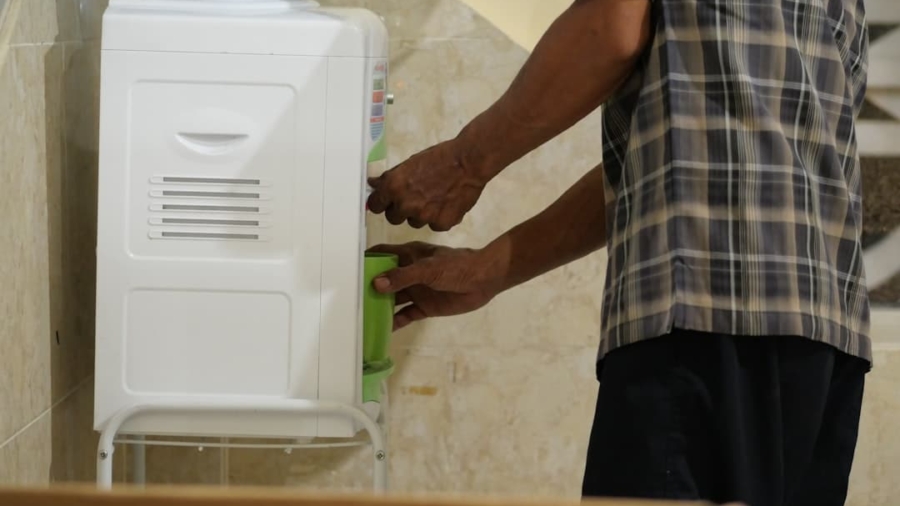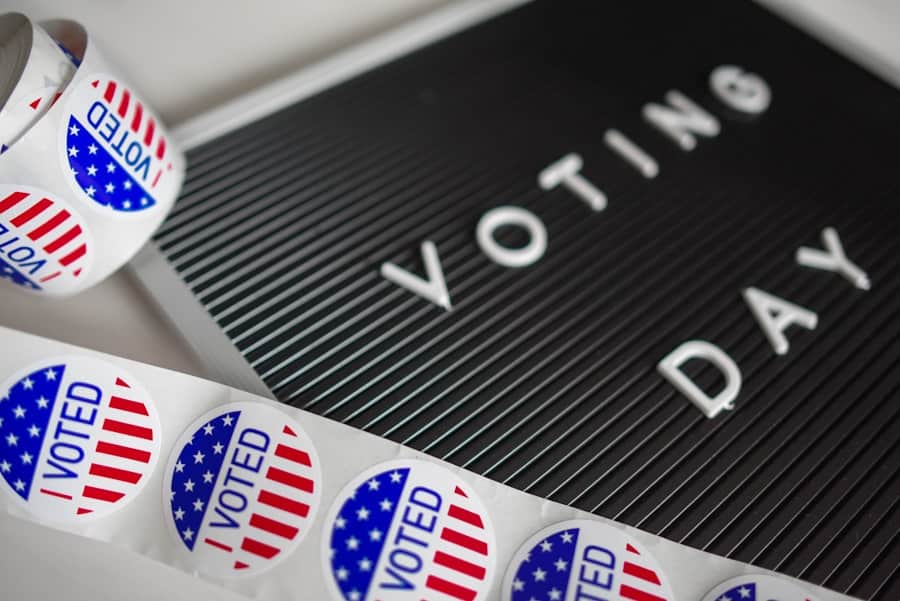Real-time election audits have emerged as a critical component in the electoral process, ensuring transparency, accuracy, and public trust in democratic systems. These audits serve as a verification mechanism, allowing election officials to confirm that the votes cast reflect the true will of the electorate. The advent of technology has transformed traditional auditing methods, enabling real-time data collection and analysis that can significantly enhance the efficiency and effectiveness of the auditing process.
By leveraging modern tools and techniques, election officials can conduct thorough examinations of voting results almost instantaneously, thereby addressing concerns about electoral integrity and potential fraud. The integration of technology into election audits is not merely a trend but a necessary evolution in response to the increasing complexity of electoral systems. As elections become more intricate, with diverse voting methods and an expanding electorate, the need for robust auditing mechanisms becomes paramount.
Real-time audits can help identify discrepancies early in the process, allowing for timely corrections and fostering public confidence in the electoral outcomes. This proactive approach to election integrity is essential in an era where misinformation can spread rapidly, potentially undermining the legitimacy of democratic processes.
Key Takeaways
- Real-time election audits provide immediate and accurate results for election processes.
- Wireless technology plays a crucial role in enabling real-time election audits by facilitating quick and secure data transmission.
- The security and reliability of wireless networks are essential for ensuring the integrity of election audits and preventing potential cyber threats.
- Using wireless technology for election audits offers advantages such as flexibility and accessibility, but also presents challenges related to security and potential technical issues.
- Case studies demonstrate successful implementation of wireless technology in real-time election audits, showcasing its potential for improving transparency and efficiency in election processes.
The Importance of Wireless Technology in Real-Time Election Audits
Wireless technology plays a pivotal role in facilitating real-time election audits by enabling seamless communication and data transfer among various stakeholders involved in the electoral process. The ability to transmit information wirelessly allows election officials to gather and analyze data from multiple locations without the constraints of physical connections. This flexibility is particularly beneficial in large-scale elections where polling places may be dispersed across vast geographic areas.
Wireless technology ensures that data can be collected and transmitted quickly, allowing for immediate analysis and reporting. Moreover, wireless technology enhances the accessibility of election audits. With mobile devices and wireless networks, election officials can conduct audits on-site at polling locations or central counting facilities without needing extensive infrastructure.
This mobility not only streamlines the auditing process but also empowers officials to respond swiftly to any irregularities that may arise during the election. The immediacy of wireless communication fosters a more dynamic auditing environment, where issues can be addressed in real time, thereby reinforcing the integrity of the electoral process.
Security and Reliability of Wireless Networks in Election Audits
While wireless technology offers numerous advantages for real-time election audits, concerns regarding security and reliability must be addressed to ensure the integrity of the electoral process. The potential for cyber threats poses significant risks to wireless networks used in election audits. Unauthorized access, data breaches, and interference with communication channels can compromise the accuracy of audit results and erode public trust in the electoral system.
Therefore, implementing robust security measures is essential to safeguard sensitive information and maintain the integrity of the audit process. To mitigate these risks, election officials must adopt comprehensive cybersecurity protocols tailored to the unique challenges posed by wireless networks. This includes employing encryption techniques to protect data during transmission, utilizing secure authentication methods to verify user identities, and conducting regular security assessments to identify vulnerabilities.
Additionally, establishing redundant communication channels can enhance reliability by ensuring that data can still be transmitted even if one network experiences disruptions. By prioritizing security and reliability, election officials can harness the benefits of wireless technology while minimizing potential threats to the integrity of real-time election audits.
Advantages and Challenges of Using Wireless Technology for Election Audits
The advantages of using wireless technology for real-time election audits are manifold. One significant benefit is the speed at which data can be collected and analyzed. Traditional auditing methods often involve labor-intensive processes that can delay results and create opportunities for errors or discrepancies to go unnoticed.
In contrast, wireless technology enables rapid data transmission, allowing election officials to conduct audits more efficiently and effectively. This immediacy not only enhances the overall auditing process but also instills greater confidence among voters regarding the accuracy of election outcomes. However, challenges accompany these advantages.
One primary concern is the potential for technical failures or connectivity issues that could disrupt the auditing process. In areas with limited wireless infrastructure or during peak usage times, network congestion may hinder data transmission, leading to delays or incomplete audits. Additionally, reliance on technology introduces a learning curve for election officials who may not be familiar with advanced wireless systems.
Training and support are crucial to ensure that personnel can effectively utilize these technologies while maintaining high standards of accuracy and security.
Case Studies of Successful Implementation of Wireless in Real-Time Election Audits
Several jurisdictions have successfully implemented wireless technology in their real-time election audits, showcasing its potential to enhance electoral integrity. For instance, in 2020, a major U.S. city utilized a wireless network to facilitate real-time monitoring of ballot counting during a high-stakes election.
By equipping auditors with mobile devices connected to a secure wireless network, officials were able to track ballot counts as they occurred, allowing for immediate identification of any discrepancies. This proactive approach not only expedited the auditing process but also provided transparency to observers and stakeholders. Another notable example comes from an international context where a country adopted wireless technology for its national elections.
By deploying a comprehensive wireless system that connected polling stations with central counting facilities, election officials were able to conduct real-time audits across multiple regions simultaneously. This system allowed for immediate reporting of results while enabling auditors to verify data against physical ballots efficiently. The success of this implementation not only improved the accuracy of results but also bolstered public confidence in the electoral process.
Future Trends and Innovations in Wireless Technology for Election Audits
As technology continues to evolve, so too will the methods employed in real-time election audits.
The implementation of 5G could revolutionize how election audits are conducted by enabling near-instantaneous communication between polling places and central offices, thereby further reducing the time required for data collection and analysis.
Additionally, innovations in artificial intelligence (AI) and machine learning are poised to play a significant role in future election audits. These technologies can analyze vast amounts of data quickly, identifying patterns or anomalies that may warrant further investigation. By integrating AI-driven analytics into wireless systems used for real-time audits, election officials can enhance their ability to detect irregularities and ensure that every vote is accurately counted.
As these technologies mature, they will likely become integral components of modern electoral processes.
Considerations for Implementing Wireless in Real-Time Election Audits
When considering the implementation of wireless technology for real-time election audits, several factors must be taken into account to ensure success. First and foremost is the need for comprehensive planning and infrastructure development. Election officials must assess existing wireless capabilities within their jurisdictions and identify any gaps that need to be addressed before deployment.
This may involve upgrading network infrastructure or investing in new technologies that can support secure and reliable communication during elections. Training is another critical consideration.
Providing adequate training sessions and resources will empower officials to navigate potential challenges confidently and ensure that audits are conducted with precision. Furthermore, engaging with stakeholders—including political parties, civil society organizations, and voters—can foster transparency and build trust in the auditing process.
The Impact of Wireless Technology on the Transparency and Integrity of Election Audits
The integration of wireless technology into real-time election audits represents a significant advancement in promoting transparency and integrity within electoral processes. By enabling rapid data collection and analysis while enhancing communication among stakeholders, wireless systems empower election officials to conduct thorough audits that reinforce public confidence in democratic outcomes. As jurisdictions continue to explore innovative solutions for improving electoral integrity, it is clear that wireless technology will play an increasingly vital role in shaping the future of election audits.
The ongoing evolution of wireless technology presents both opportunities and challenges that must be navigated carefully by election officials. By prioritizing security measures, investing in training, and embracing emerging technologies such as AI and 5G networks, jurisdictions can harness the full potential of wireless systems to enhance their electoral processes. Ultimately, the successful implementation of these technologies will contribute significantly to ensuring that elections are fair, transparent, and reflective of the will of the people.
In a recent article from Enicomp, the importance of online technology magazines like How-To Geek is highlighted. These platforms provide valuable information and resources for individuals looking to stay informed about the latest trends and developments in the tech industry. This type of content can be particularly useful for those interested in learning more about the role of wireless technology in supporting real-time election audits, as discussed in the article on Enicomp.
FAQs
What is the role of wireless technology in supporting real-time election audits?
Wireless technology can be used to transmit real-time election data from polling stations to a central database, allowing for immediate auditing and verification of election results.
How does wireless technology improve the efficiency of election audits?
Wireless technology allows for the quick and seamless transmission of election data, reducing the time and resources required for manual data collection and entry.
What are the security considerations when using wireless technology for election audits?
Security measures such as encryption, authentication, and secure network protocols are essential when using wireless technology for election audits to prevent unauthorized access and tampering of election data.
What are the potential challenges of using wireless technology for real-time election audits?
Challenges may include network connectivity issues, potential for interference or hacking, and the need for reliable power sources for wireless devices in remote polling locations.
How can wireless technology be integrated into existing election audit processes?
Wireless technology can be integrated by implementing secure wireless networks, providing training for election officials, and ensuring compatibility with existing audit procedures and regulations.



